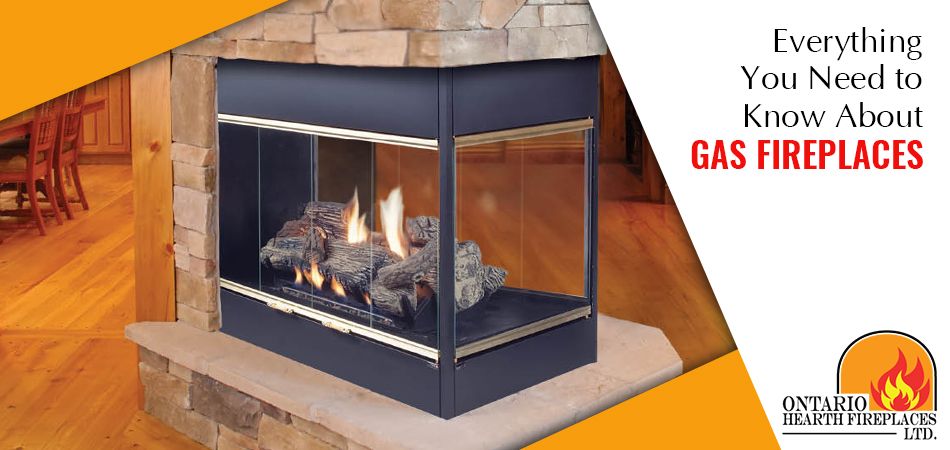Fireplaces are common in North American cities as the cold weather makes people want cosy and warm indoors. Having a gas fireplace in Canada is quite popular for its user-friendliness. Not having to gather woods to start the fire makes it easy to use. Instead, you can enjoy home warmth just by pushing a button. Also, the flame of a gas fireplace is similar to a wood hearth creating the same look and feel in your living space. Low maintenance needs make it convenient for people who lead a busy life.


If you’re looking to buy a gas fireplace for your home, then you should know everything about it before purchasing. Read on to learn more.
Types of Gas Fireplaces
There are three types of gas fireplaces:
- Log sets
- Built-ins
- Inserts
Out of these, inserts and log sets transform traditional fireplaces to running on gas. A log set is a kit with logs, a grate and a burner to create the fire for the smoke to be discharged through the chimney. Inserts are self-contained units with venting. They warm a room with the same heating efficiency as built-ins. On the other hand, built-ins are unattached appliances that are fitted with wall finishes and framing. This type of gas fireplace is versatile and is available in many models for different types of homes.
Venting Options
Here’s a list of venting options:
- Direct Vent
This is the safest option as it vents the smoke and pollutants away through a chimney. It is versatile, energy efficient (70%-85%) and safe which makes it popular among homeowners, especially those who have new or airtight houses. For proprietors who look for security, a direct vent fireplace is the best choice.
- Natural Vent
A natural vent fireplace takes the combustible air and releases it through a brick chimney or a pipe venting system. Some of these have sensors to detect exhaust gasses coming down the flue. Though it is inexpensive, the issue of air flow in the home makes it less versatile.
- Vent-free
Vent-free hearths are 99% efficient and can be placed anywhere. They don’t require any chimney to keep the smoke away. The warmth generated from this fireplace stays intact in a room as it is vent-free. But, for quality air, this hearth is designed with a unique specification like a sensor that will automatically switch it off if there’s lower oxygen levels in the room.
Note- For asthma and allergy patients, opting for vented fireplaces is a wise decision.
- Power Vent
This is the least common type. It has a fan-powered accessory fixed to enhance the air exchange. For this reason, it allows for extensive vent runs. Also, it can be installed in uncommon places in a home like a freestanding wall.
Benefits
A gas fireplace comes with an array of benefits and these are:
- No dependency on exterior material like wood
- Affordable
- Convenient
- Not messy
- Low maintenance
- No restrictions on burning the fireplace from the Municipality
- Energy efficient compared to wood
- Creates clean smoke
Installation
An expert is always recommended for proper installation of the fireplace. For a vent-free hearth, you don’t need to fix a chimney but, for the rest, you’ll need to set up the venting system. Thus, call a professional from a renowned company like Ontario Hearth and get it fixed in your home.
The above-mentioned information is everything that you need to know about a gas fireplace. Compare the differences and buy the kind of fireplaces that best suits your needs.
